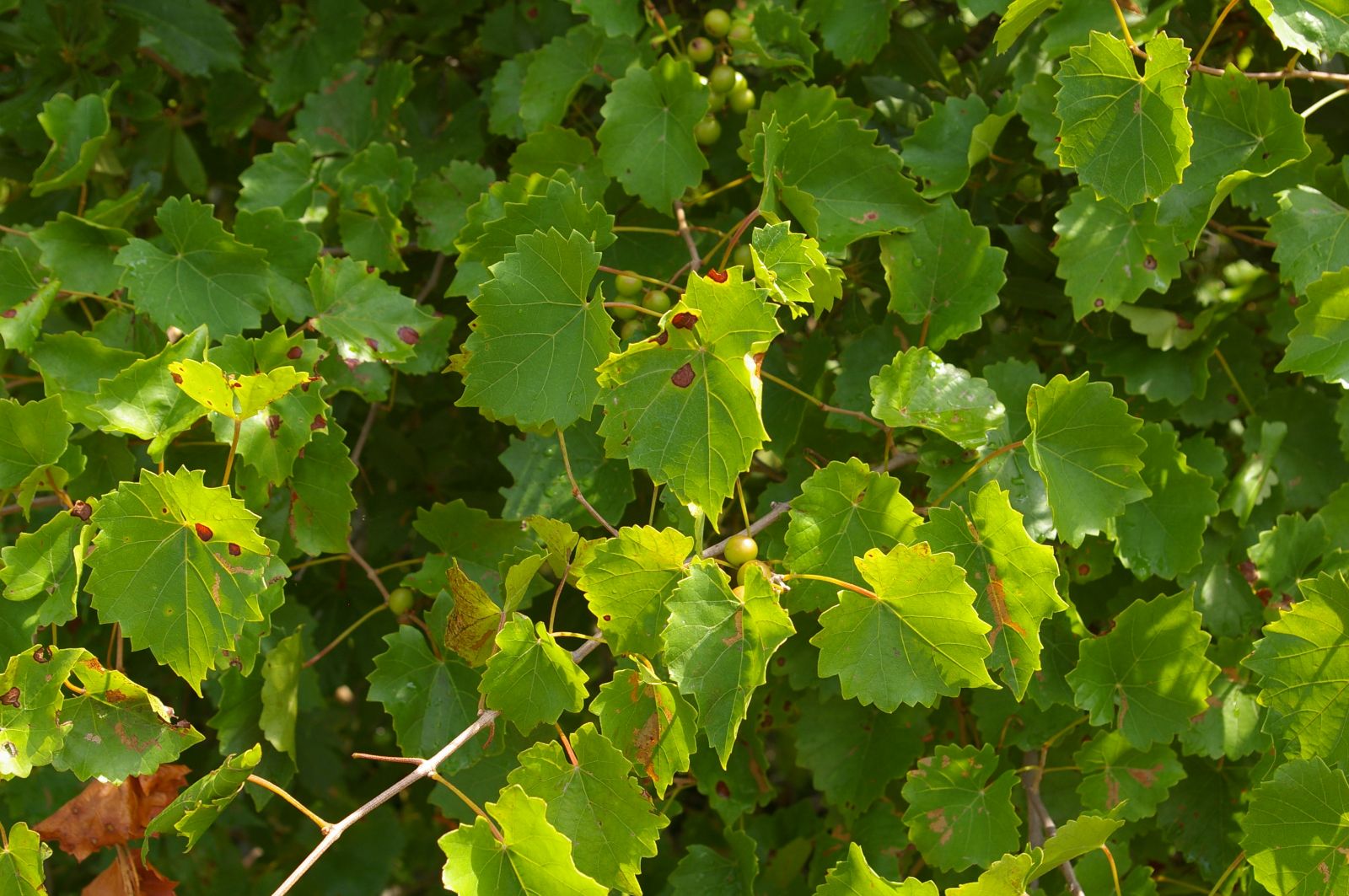Vitis rotundifolia
Credits
Article from Bean's Trees and Shrubs Hardy in the British Isles
Recommended citation
'Vitis rotundifolia' from the website Trees and Shrubs Online (treesandshrubsonline.
Genus
Common Names
- Muscadine
Synonyms
- V. vulpina sens . Torr. & Gr., not L.
- Muscadinia rotundifolia (Michx.) Small
Other taxa in genus
A vigorous, deciduous climber, with stems up to 90 ft in length, in the wild, the bark adhering (not shredding); young shoots warted; tendrils unbranched. Leaves broadly ovate or roundish, always broadly heart-shaped at the base, pointed, 2 to 41⁄2 in. long and wide, of firm texture, seldom lobed, but with the marginal teeth large, irregular, triangular, upper surface glossy dark green, glabrous, the lower one yellowish green, also glossy, with down in the vein-axils and sometimes on the veins; stalk usually shorter than the blade. Berries roundish, 2⁄3 to 1 in. in diameter, dull purple without bloom, skin thick and tough; flavour musky.
Native of the southern USA and the source of some American vineyard varieties, such as ‘Scuppernong’. Nearly allied to it is V. munsoniana Simpson ex Munson, a native of Florida and Georgia, which has been in cultivation here but is not very hardy. It has smaller fruits with a tender skin and acid flesh. These two species are distinguished from all other members of the genus by the pith running uninterrupted through the joints of the stem, and by the non-shredding bark and unforked tendrils.

